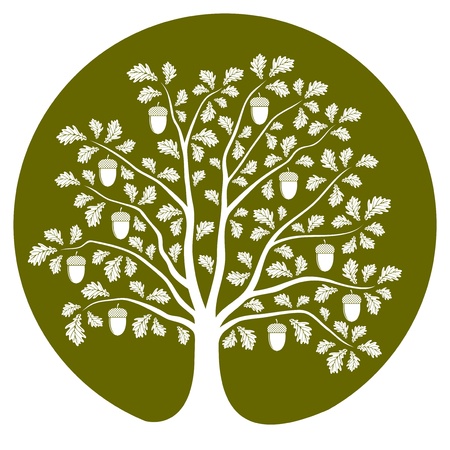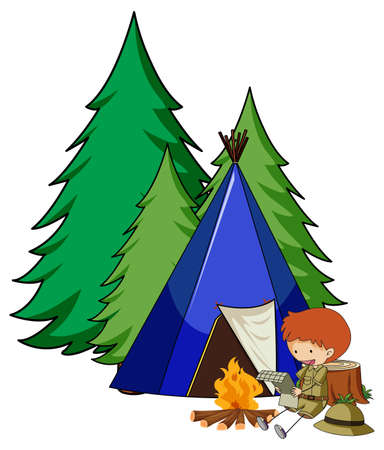Introduction to Foraging in the U.S.
Foraging—searching for wild edible plants, mushrooms, and other natural foods—has deep roots in American culture. Long before modern grocery stores, Indigenous peoples and early settlers relied on the land for survival, learning how to identify nutritious plants and fungi throughout the seasons. While foraging faded from daily life as supermarkets became the norm, it’s now making a big comeback across the United States. Today, more people are discovering the joys and benefits of gathering food straight from nature.
The History of Foraging in America
Native American tribes were expert foragers, passing down knowledge about wild edibles through generations. Early colonists adopted many of these skills to survive harsh winters and lean times. Over time, as cities grew and agriculture expanded, foraging became less common. However, traditions persisted in rural communities and among outdoor enthusiasts.
Why Is Foraging Becoming Popular Again?
Several factors have led to a renewed interest in wild foraging:
| Reason | Description |
|---|---|
| Sustainability | Foraging promotes sustainable eating by reducing reliance on industrial agriculture. |
| Food Security | Gathering wild foods adds variety to diets and provides a backup food source during shortages. |
| Health Benefits | Wild edibles are often packed with nutrients and free from pesticides. |
| Connection to Nature | Foraging encourages people to spend time outdoors and appreciate local ecosystems. |
| Culinary Adventure | Chefs and home cooks love experimenting with unique flavors found only in the wild. |
The Benefits of Wild Foraging
Heading out into America’s forests, fields, or even urban parks can yield delicious finds like wild berries, edible greens, nuts, and mushrooms. Foraging supports local biodiversity by encouraging stewardship of native plants. It also helps foster a sense of community—many foragers share their knowledge at workshops, online groups, or neighborhood walks. Whether you’re looking to add nutrition to your meals or simply enjoy the thrill of discovery, foraging offers something for everyone in the U.S. wilderness.
Identifying Common Edible Plants and Fungi
Foraging in the U.S. wilderness can be both exciting and rewarding, especially when you know how to spot safe and nutritious wild edibles. Here’s a guide to some of the most easily recognized wild foods you can find in many parts of the United States.
Morel Mushrooms
Morels are one of the most sought-after wild mushrooms in North America. They have a unique honeycomb appearance, with a cone-shaped cap full of pits and ridges. Morels grow in forests, often near dead or dying trees in springtime. Always cook morels before eating, as raw morels can upset your stomach.
How to Identify Morel Mushrooms
| Feature | Description |
|---|---|
| Cap Shape | Honeycomb-like, conical or oval, attached directly to stem |
| Color | Tans to dark browns; never bright colors |
| Season | Spring (April-June) |
| Common Locations | Near ash, elm, and old apple trees; forest floors with decaying leaves |
Ramps (Wild Leeks)
Ramps are wild onions that pop up in shady forests across the eastern U.S. during early spring. Their garlicky aroma makes them easy to identify. Ramps have broad, smooth green leaves and a purplish stem.
Identifying Ramps vs. Lookalikes
| Plant Feature | Description | Caution |
|---|---|---|
| Leaves | Broad, smooth, bright green leaves, 1-2 per plant | Lily-of-the-valley is toxic but looks similar; ramps smell like onions/garlic when crushed |
| Stems | Purple or burgundy at base; white below ground | |
| Aroma | Strong garlic/onion smell from all parts of the plant | |
| Season | Early spring (March-May) |
Wild Berries: Blackberries & Blueberries
The U.S. is home to many edible wild berries, but blackberries and blueberries are among the safest for beginners. Both grow on shrubs and have easily recognizable fruits.
Telling Safe Wild Berries Apart from Dangerous Ones
| Berry Type | Description & Color When Ripe | Caution |
|---|---|---|
| Blackberry | Clustered drupelets, deep purple-black when ripe, thorny bushes | Avoid berries growing as singles or with milky sap (some are toxic) |
| Blueberry | Round, blue/purple berries; smooth-skinned; grows on small shrubs | Avoid white or yellow berries—often poisonous |
| Dewberry (similar to blackberry) | Creeping vines with fewer thorns; fruit looks like small blackberries |
Dandelions (Taraxacum officinale)
Dandelions are found almost everywhere in the U.S.—fields, lawns, meadows—and every part is edible: flower, leaves, and roots. Young leaves are best for salads as they’re less bitter.
Dandelion Identification Guide
| Part of Plant | Description & Use | Caution |
|---|---|---|
| Leaves | Serrated/lobed edges; form a rosette close to the ground; best when young and tender; used raw or cooked | Avoid areas sprayed with pesticides or herbicides |
| Flowers | Bright yellow heads made of many tiny petals; used for teas or fritters | |
| Roots | Tapered taproot; used roasted as coffee substitute or cooked like root vegetables |
Important Foraging Reminders:
- If you’re ever unsure about a plant or mushroom’s identity, don’t eat it—many wild species look alike but can be dangerous.
- A good rule: “When in doubt, leave it out.” Take along a regional field guide or use trusted apps for identification.
- Avoid harvesting near roadsides or polluted areas where plants may absorb toxins.
The U.S. wilderness offers plenty of delicious options for responsible foragers who take time to learn what’s safe and how to recognize it.

3. Safety First: Avoiding Poisonous Look-Alikes
Spotting the Difference: Edible vs. Toxic Species
When foraging in the U.S. wilderness, its essential to be able to tell the difference between safe wild edibles and their toxic look-alikes. Many plants, berries, and mushrooms have dangerous twins that can cause serious illness or worse. Here are some practical tips to help you safely identify your finds:
The Golden Rules of Safe Foraging
- Never eat anything unless you’re 100% sure what it is.
- Use multiple sources: Cross-check field guides, apps, and expert advice.
- Start small: Even with edible plants, try a tiny amount first to test for allergies.
- Leave unknowns alone: If in doubt, leave it out.
- Teach kids to ask before tasting anything wild.
Common Edibles and Their Dangerous Look-Alikes
| Edible Wild Food | Toxic Look-Alike | Key Differences |
|---|---|---|
| Wild Blueberries | Pokeweed Berries | Blueberries grow on bushes, single berries; pokeweed has clusters and red stems. |
| Morel Mushrooms | false Morels (Gyromitra) | True morels are hollow inside; false morels are not and often misshapen. |
| Wild Garlic/Onion | Death Camas | Wild garlic smells strongly of onion; death camas does not have any onion scent. |
| Lamb’s Quarters (Wild Spinach) | Nettleleaf Goosefoot | Lamb’s quarters have powdery leaves underneath; nettleleaf goosefoot is rougher and can irritate skin. |
| Blackberries/Raspberries | Doll’s Eyes (White Baneberry) | Doll’s eyes are white with a black dot and grow on thick red stalks; edible berries are red/purple and grow in clusters on thorny canes. |
Understanding Regional Hazards in the U.S.
The types of edible plants and their poisonous counterparts can vary depending on where you’re foraging—from the Pacific Northwest to the Southeast or the Rocky Mountains. Always research what grows in your local area. For example:
- Southeast: Watch out for toxic water hemlock near streams—it looks like wild carrot but is deadly.
- Northeast: Red baneberry grows near wild strawberries; only eat berries you recognize from safe patches.
- West Coast: Amanita mushrooms are highly toxic but resemble some edible species—avoid all wild mushrooms unless expertly identified!
- Southwest: Some cactus fruits are safe, but others, like peyote, should never be consumed without expert knowledge.
Quick Checklist Before You Taste Anything Wild:
- Smell it: Edibles like wild garlic will have a strong scent—if there’s no familiar smell, skip it.
- Check location: Some plants only grow in certain areas—know your region’s signature edibles and dangers.
- Avoid roadside or polluted areas: Plants here may absorb toxins even if they’re technically edible.
- If unsure, take photos: Snap a picture and consult an expert before consuming anything new!
Your Best Tools for Safe Foraging:
- A reliable field guide with clear color photos specific to your region.
- A smartphone app for plant ID (but always double-check with a guidebook).
- A notebook to record locations and details about your finds for future reference.
- The phone number of your local poison control center—just in case!
The bottom line: Take your time, do your homework, and enjoy discovering nature’s pantry while putting safety first!
4. Responsible and Sustainable Foraging Practices
Foraging the Right Way: Why It Matters
Foraging for wild edibles is a fantastic way to connect with nature, but it comes with responsibilities. If we want to keep America’s forests, meadows, and wild spaces healthy for future generations, we need to follow responsible and sustainable practices every time we gather.
Leave No Trace: The Golden Rule
The Leave No Trace (LNT) principles aren’t just for hikers—they’re just as important for foragers. Here’s how you can apply them:
| LNT Principle | How Foragers Can Apply It |
|---|---|
| Plan Ahead & Prepare | Research your area and target species before heading out. Know what’s in season and what’s protected. |
| Travel & Camp on Durable Surfaces | Stick to established trails and avoid trampling sensitive plants or habitats while collecting. |
| Dispose of Waste Properly | Pack out all trash, including any food scraps or packaging. |
| Leave What You Find | Only take what you’ll use. Don’t pick rare or endangered plants—leave them for wildlife and future growth. |
| Minimize Campfire Impact | If you need to cook, use a portable stove instead of making a fire in the wilderness. |
| Respect Wildlife | Avoid disturbing animals or damaging nests, burrows, or habitats during your search. |
| Be Considerate of Others | Share trails respectfully with other visitors and avoid overharvesting popular spots. |
Respect Local Laws and Private Property
The U.S. is a patchwork of public lands, private property, and protected spaces. Here’s what you need to know:
- Get Permission: Always ask landowners before foraging on private property. Many state parks also require permits—check local regulations online or at ranger stations.
- No-Go Zones: Some plants are protected by law, especially rare or threatened species. Picking them can result in hefty fines.
- Follow Harvest Limits: Some areas set limits on how much you can gather—these rules help prevent overharvesting and ensure plenty remains for others (and wildlife!).
Caring for the Ecosystem: Take Only What You Need
Sustainable foraging means only harvesting what you can use. Overharvesting can harm plant populations and disrupt entire ecosystems. Use this simple guide to stay responsible:
| Best Practice | Description |
|---|---|
| The 1-in-20 Rule | If there are fewer than 20 specimens in an area, don’t harvest at all. If there are more, take no more than 5% of what’s there. |
| Avoid Roots When Possible | Picking leaves, fruits, or flowers is usually less harmful than digging up roots or bulbs. |
| Harvest from Healthy Populations Only | If a patch looks stressed or sparse, leave it be so it can recover. |
Treading Lightly: Respecting Nature and Community
Your actions as a forager have ripple effects—not just on the land, but on other people who enjoy it too. Share tips with fellow foragers about sustainable practices, and encourage newcomers to learn before they collect. Together, we can keep America’s wild foods abundant and our landscapes thriving.
5. Preparing and Enjoying Your Wild Harvest
Simple Preparation Methods
Once you’ve gathered wild edibles from the U.S. wilderness, proper preparation is key to enjoying your finds safely and deliciously. Always wash wild plants thoroughly with clean water to remove dirt or insects. Trim away any damaged parts, and double-check for lookalikes before cooking or eating.
Easy Cooking Techniques
Many wild edibles can be enjoyed raw, while others taste better cooked. Here’s a quick guide:
| Edible | Best Preparation |
|---|---|
| Dandelion Greens | Sauté in olive oil with garlic or add fresh to salads |
| Morel Mushrooms | Pan-fry in butter; never eat raw |
| Lamb’s Quarters | Steam or stir-fry like spinach |
| Purslane | Add raw to salads or lightly sauté |
| Wild Berries | Eat fresh, bake into pies, or make jams |
Preserving Your Wild Harvest
If you’ve collected more than you can eat right away, try these simple preservation methods:
- Drying: Hang herbs like mint or nettle in a cool, dry place, or use a dehydrator for mushrooms and berries.
- Freezing: Wash and chop greens, then blanch quickly before freezing in airtight containers.
- Canning & Jamming: Turn wild fruits into preserves to enjoy all year round.
Classic American Recipes Using Wild Edibles
Wild foods are perfect for classic dishes enjoyed across the United States. Try these favorites:
- Dandelion Salad: Toss dandelion greens with bacon bits, hard-boiled eggs, and a tangy vinaigrette.
- Berry Cobbler: Use wild blackberries or raspberries as the base for a traditional cobbler dessert.
- Lamb’s Quarters Sauté: Sauté with onions and serve as a side dish at your next cookout.
- Nettle Soup: Simmer young nettle leaves with potatoes, onions, and broth for a nutrient-rich soup.
- Purslane Tacos: Add purslane to tacos for a crunchy, lemony twist.
Sharing Your Wild Finds With Others
A big part of foraging culture in America is sharing your harvest. Host a potluck featuring wild food dishes, give homemade jams as gifts, or invite friends on your next foraging trip. Remember to teach others about sustainable harvesting so everyone can enjoy nature’s bounty responsibly!

